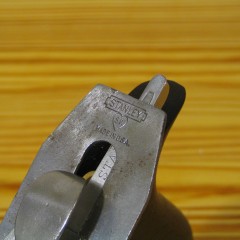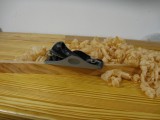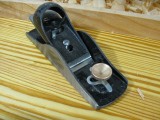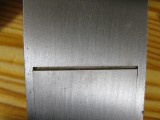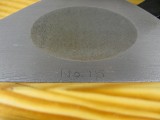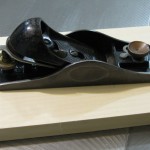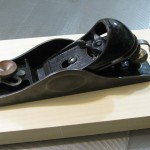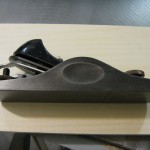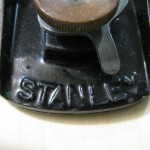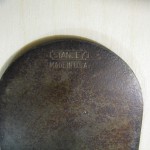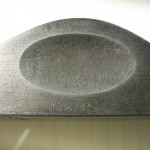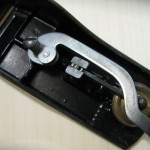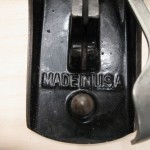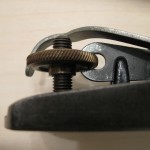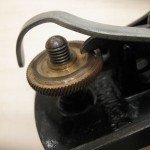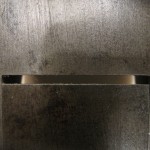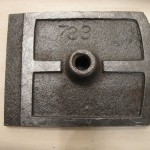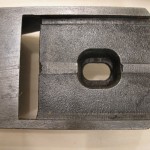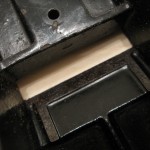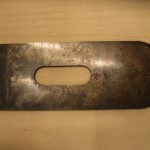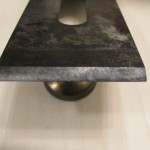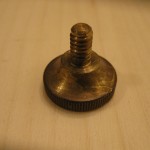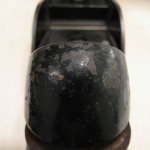Back in February, I wrote about a great marking knife I found on eBay. I’ve been so impressed with it, that when the same seller had a scratch awl listed a few weeks ago, I just had to have it. The seller goes by the screen name cdnrx1, and he does excellent work, so if your in the market for a quality marking knife, or scratch awl, be sure to check him out.
The awl handle is made of Lacewood with East Indian Rosewood accents. The shaft is made from O-1 steel, and its sheath is made from East Indian Rosewood.
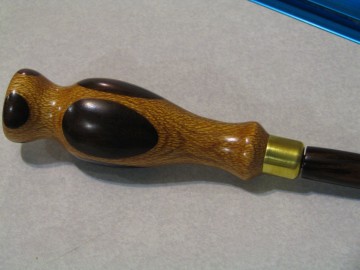 Continue Reading…
Continue Reading…
Who says you can’t find great deals on eBay anymore!! This lovely marking knife only cost me $29 delivered to my door step. It’s 7″ long by 1/2″ in diameter at the finger grip, and made from genuine Middle-Eastern olive wood. The blade is made of O-1 tool steel that has been hardened, tempered, and then sharpened to a 55 degree included angle with 20 degree bevels. After 15 minutes of honing on my water stones, the blade was sharp enough to shave with. This knife will probably last me a life time, but at some point in the future I want to try my hand at making one.
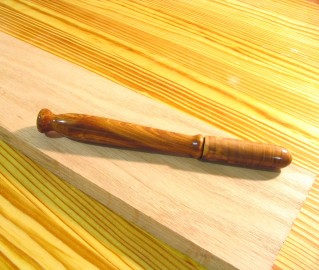
The cap makes it safe for breast pocket storage.
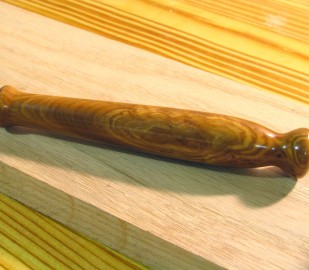
If you ignore the dust, you can see the lovely almost burl like grain patern on the handle.
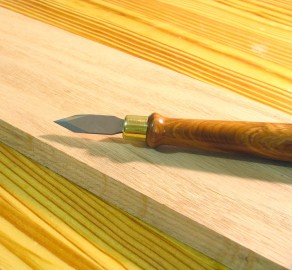
Though the image doesn't do it justice, the blade is razer sharp, highly polished.
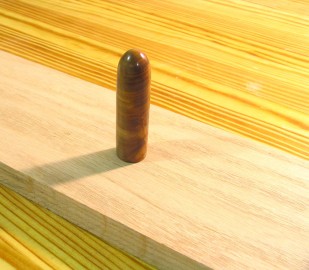
The cap
I finally broke down and purchased some waterstones so that I could take my sharpening skills to the next level. In my opinion the only real drawback to waterstones is that they don’t stay flat. Thus as soon as I placed my order, I spent a little time searching the net looking for the best flattening method. Lots of methods exist, but the two most common are: a coarse diamond honing stone, or sandpaper on a surface plate.
While diamond hones will do a great job of quickly removing material they are notoriously unflat, and thus in my opinion not acceptable. I have a surface plate, and while it is flat, I don’t like the idea of constantly having sandpaper glued to it. Additionally a 70 pound surface plate isn’t very portable. What I finally decided on (shown below) was a hybrid approach.
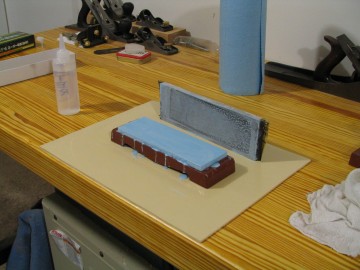 Continue Reading…
Continue Reading…
As promised, Here are some shots of the refinished Stanley #15. I’ve only spent about an hour using this plane, but I like it’s size and lateral blade adjustment a lot more than I do my #60-1/2. Within a minute of putting in a new Hock blade, I was using it like a miniature smoother, and taking full width transparent shavings in scrap cherry. I also like the size of the #15 better, it’s greater length and width fit’s into my hand better than the #60-1/2.
I haven’t spent much time in the shop the last month or so because of a big project at work. Thankfully that project is now over, and I’ve been able to get into the shop again. One of the projects I want to get completed before Christmas is refurbishing the Stanley #15 I picked up on eBay about 6 weeks ago. I picked it up, because I wanted A regular angle block plane to supplement my #60-1/2. I’ll probably do the refurbishment after I finish Rebecca’s Shoe Rack. The following shots (I went a little overboard) are as I received it from the seller.

